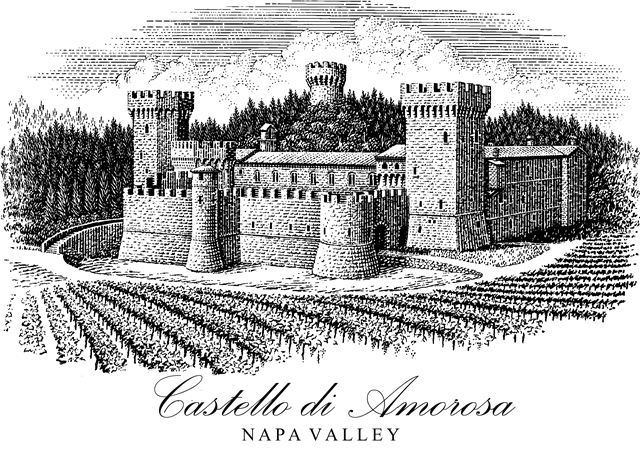
Learn How to Taste Wine
A Beginner’s Guide to Wine Tasting: Sip, Savor, and Discover
Wine tasting might seem like an intimidating experience reserved for sommeliers or wine enthusiasts, but the truth is, anyone can learn to appreciate and enjoy wine. Whether you’re visiting Castello di Amorosa’s Napa Valley tasting room or exploring bottles at home, this guide, designed for beginners, will help you taste wine like a pro. Let’s begin to learn how to properly taste wine with these steps:
Step 1: Choose Your Wine
Before you begin, decide on the type of wine you’d like to taste. As a beginner, we’ll teach you how to taste good wine properly. You should first consider starting with a variety of wines – a crisp Pinot Grigio, a robust Napa Valley Cabernet Sauvignon, or a light and fruity Morning Dew Ranch Vineyard Pinot Noir. This variety of wines will help you identify your preferences.
Step 2: Set the Scene

The environment plays a significant role in wine tasting. Here are a few tips:
- Lighting: Ensure the area is well-lit so you can observe the wine’s color.
- Glasses: Use clear wine glasses to better appreciate the wine’s appearance and aroma.
- Temperature: Serve white wines chilled. For wines like Pinot Grigio, you may want to serve at 45 to 49 degrees Fahrenheit and allow the wine to warm up in the glass. Chill these wines in the refrigerator for about 1.5 hours. For lighter reds, like our Anderson Valley Pinot Noir or Voyager Vineyard Sangiovese, serve them at 54-60 degrees to highlight the evocative aromas and flavors inherent in this popular varietal. Chill for 45-60 minutes in the refrigerator prior to serving. Bolder, big reds like Castello’s Il Barone or Merlot should be served cooler than you’d think, around 60 to 65 degrees. This will allow these bigger wines to fully express their bold aromas, express their lush mouthfeel and highlight the nuanced flavors. Chill in the refrigerator for about 25 minutes in the refrigerator prior to serving.
- Neutral Palate: Avoid strong-smelling candles or food to ensure your senses are focused on the wine.
Step 3: Observe the Wine
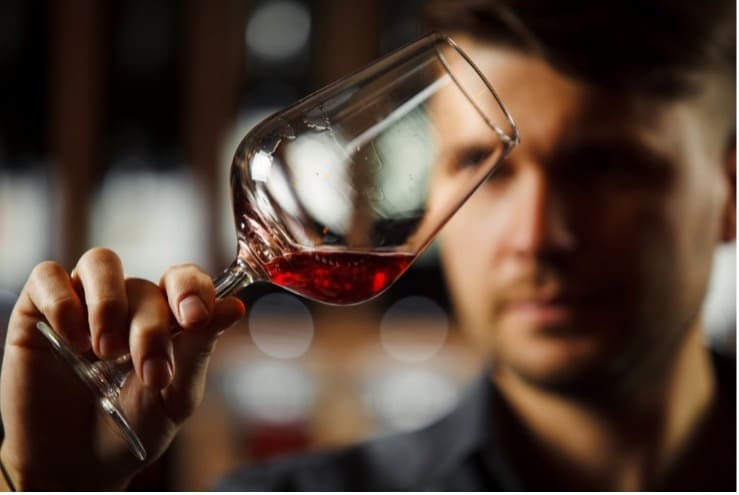
Pour a small amount of wine into your glass and take a moment to look at it:
- Color: Tilt the glass slightly and observe the wine against a white background. Is it pale or deep? Clear or cloudy?
- Legs: Swirl the wine gently. The streaks that form on the inside of the glass (known as legs) can indicate alcohol content; thicker legs often mean higher alcohol content.
Step 4: Smell the Wine
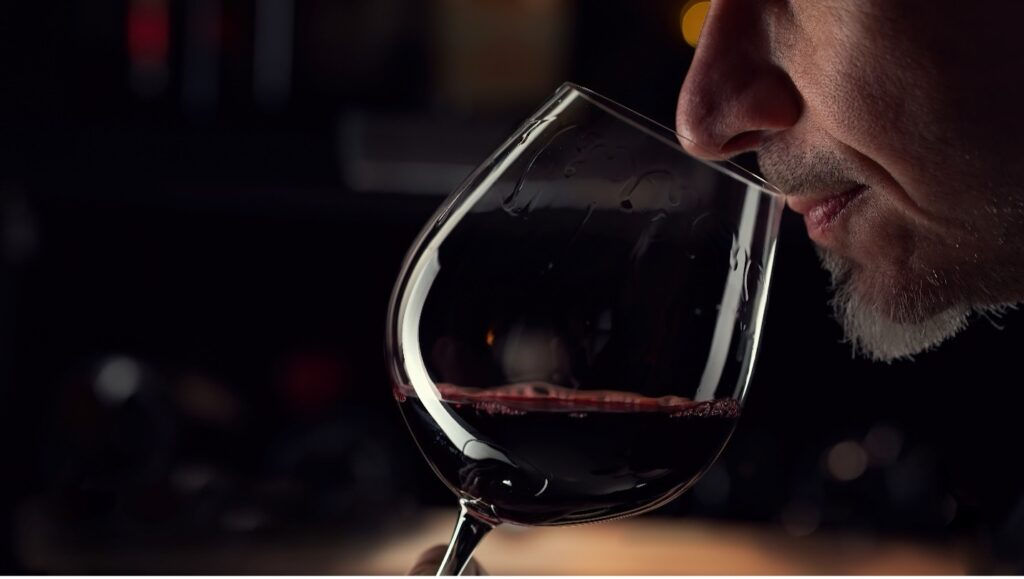
A significant portion of wine tasting involves your sense of smell. Swirl the wine to release its aromas, then:
- Take a Whiff: Place your nose over the glass and inhale deeply to experience all the aromas.
- Identify Aromas: Try to pick out specific scents. Do you smell fruits, spices, or earthy tones? Each wine has a unique bouquet that offers hints about its flavor profile. It might be helpful to close your eyes during this wine experience phase.
If you like wine with stunning aromas with beautiful flavors to match, you might want to include the Morning Dew Ranch Pinot Noir in your tasting experience. The estate vineyard is located in the Anderson Valley of California, a world-renowned area for growing Pinot Noir. Great aromas are born from vineyards in great growing regions. In the Morning Dew Ranch Pinot Noir, you might be wowed by the seemingly endless mingling of brambleberries, toasted sage and hints of clove. If you let the wine rest for a minute (breathe) the aromas will intensify and, perhaps, change slightly.
Step 5: Taste the Wine
Now for the fun part: tasting

- Take a Sip: Take a small sip and let the wine coat your tongue.
- Hold: Hold the wine in your mouth for a few seconds to fully experience its texture and flavors.
- Identify Flavors: Note the initial taste, the mid-palate flavors, and the finish. Is it sweet, acidic, or tannic? Can you taste berries, citrus, oak, or chocolate?
- Swallow or Spit: If you’re at a wine tasting, feel free to spit into the provided containers to avoid overconsumption. Repeat this process a few times and experience the differences in taste.
If one of your tastings happens to be our 2018 Napa Valley Cabernet Sauvignon, you might get aromas of toasty black and red fruit, black cherry and, perhaps, a little leather. On the palate, you’ll experience a medium to full-bodied wine with a round, mouth-filling texture. The tannins are soft, and the flavors might include dark chocolate with hints of dried herb. We hope you enjoy this beautiful creation grown in Napa Valley vineyards and crafted by Brooks Painter and Peter Velleno, our winemakers!
Step 6: Record Your Impressions
Keep a notebook or use a wine-tasting app to jot down your thoughts. Include details like the wine’s name, vintage, region, and your personal tasting notes of color, body, smell and taste on the palate and after the finish. Over time, this record will help you refine your palate and discover your preferences.
Step 7: Pair with Food
Now for the Fun Part
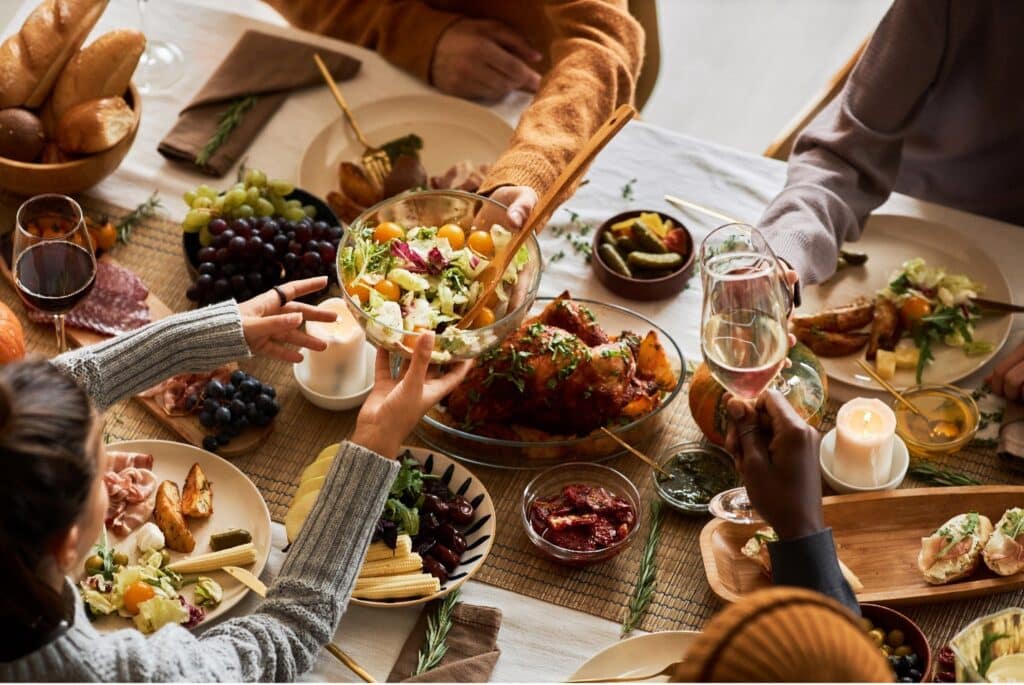
Experimenting with food pairings can elevate your wine experience. A few classic combinations include:
- White Wine: Pairs well with seafood, poultry, and creamy pasta dishes.
- Red Wine: Complements red meats, hearty stews, and aged cheeses.
- Sparkling Wine: Excellent with salty snacks, fried foods, and light desserts.
Final Tips for Beginners
- Stay Open-Minded: Don’t dismiss a wine after one sip. Some flavors develop as you taste. The bottom line is taking your time to allow the wine to open in the glass and for your palate to adjust. This could take several minutes and a few sips to properly taste the wine. We highly recommend, to enhance your wine tasting experience, to smell the aromas of the wine before taking a sip.
- Ask Questions: If you’re at a vineyard or wine shop, don’t hesitate to ask for recommendations or information about the wines.
- Practice: The more you taste, the more confident you’ll become in identifying and describing wines.
Wine tasting is an enjoyable journey that combines art, science, and personal preference. By following these steps on how to taste wine for beginners, you’ll build a foundation for appreciating wine and discovering your unique palate. So, open that bottle of your favorite Castello di Amorosa wine, grab a glass, take a sip, and let your wine adventure begin!
Wine tasting is an enjoyable journey that combines art, science, and personal preference. By following these steps, you’ll build a foundation for appreciating wine and discovering your unique palate. So, open that bottle of your favorite Castello di Amorosa wine, grab a glass, take a sip, and let your wine adventure begin!
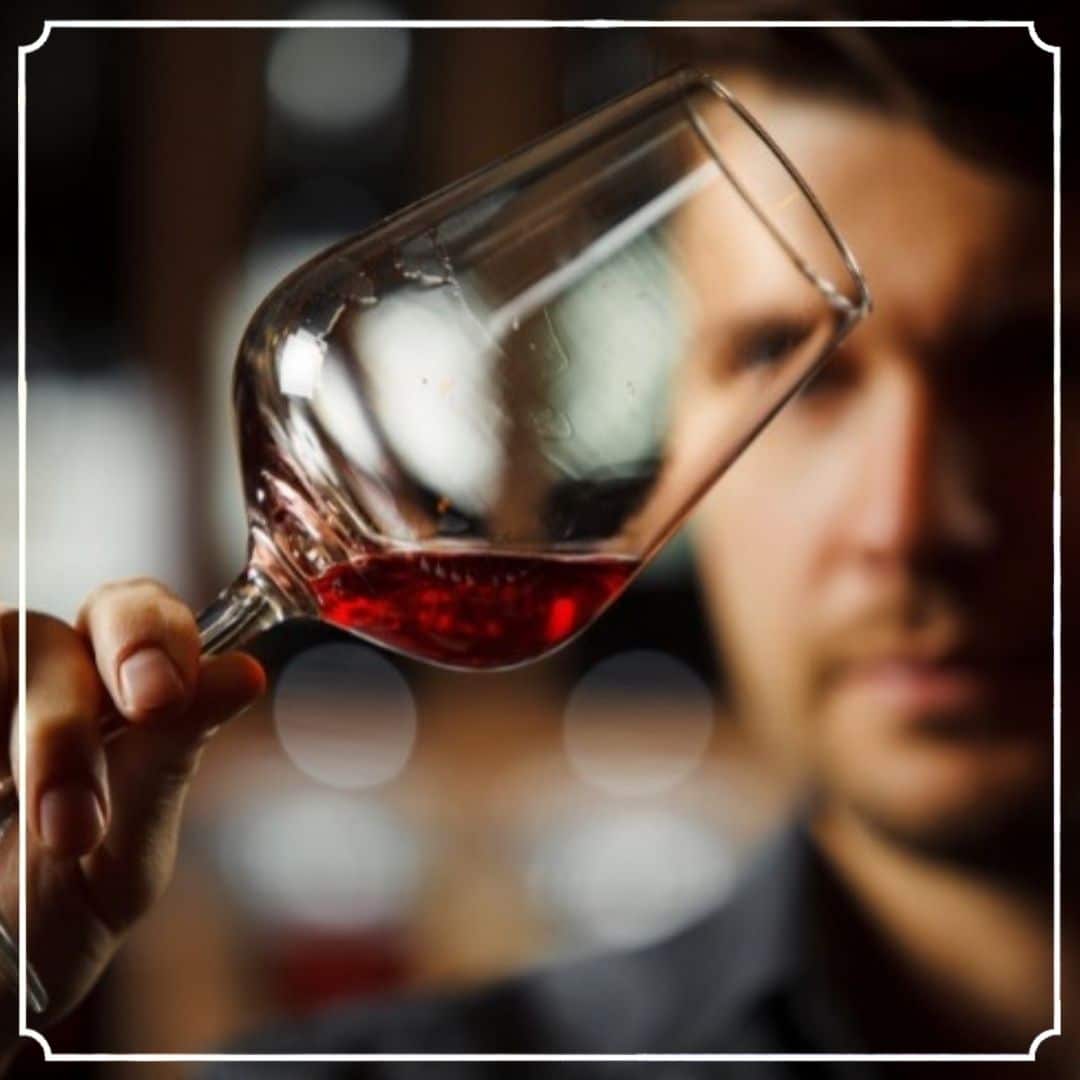
Jim Sullivan
Jim Sullivan, Vice President of Public Relations and Marketing spearheads Castello di Amorosa’s publicity and marketing initiatives.
With over 20 years of marketing, public relations and business development experience with professional motorsports teams and in a variety of healthcare organizations in Southern California, Jim first joined Castello di Amorosa in 2008 as Public Relations and Marketing Manager.
An avid cyclist, Jim fell in love with wine and wineries while exploring the Washington State countryside. His love of wine was reinforced during subsequent trips to the Napa Valley to visit family.
Jim holds an MBA from the University of Redlands and a Bachelor of Science from Central Washington University. He resides in Calistoga, Calif.
